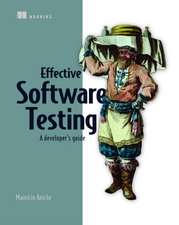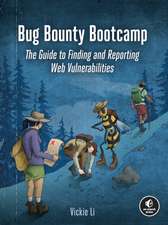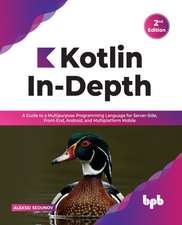Real-World Bug Hunting: A Field Guide to Web Hacking
Autor Peter Yaworskien Limba Engleză Paperback – 2 iul 2019
Each chapter begins with an explanation of a vulnerability type, then moves into a series of real bug bounty reports that show how the bugs were found. You'll learn things like how Cross-Site Request Forgery tricks users into unknowingly submitting information to websites they are logged into; how to pass along unsafe JavaScript to execute Cross-Site Scripting; how to access another user's data via Insecure Direct Object References; how to trick websites into disclosing information with Server Side Request Forgeries; and how bugs in application logic can lead to pretty serious vulnerabilities. Yaworski also shares advice on how to write effective vulnerability reports and develop relationships with bug bounty programs, as well as recommends hacking tools that can make the job a little easier.
Preț: 177.85 lei
Preț vechi: 222.32 lei
-20% Nou
34.04€ • 36.99$ • 28.61£
Carte în stoc
Livrare din stoc 11 martie
Specificații
ISBN-10: 1593278616
Pagini: 264
Dimensiuni: 177 x 234 x 22 mm
Greutate: 0.54 kg
Editura: Penguin Random House Group
Colecția No Starch Press
Locul publicării:New York, United States
Descriere
Uses real-world bug reports (vulnerabilities in software or in this case web applications) to teach programmers and InfoSec professionals how to discover and protect vulnerabilities in web applications.
Real-World Web Hacking is a field guide to finding software bugs. Ethical hacker Peter Yaworski breaks down common types of bugs, then contextualizes them with real bug bounty reports released by hackers on companies like Twitter, Facebook, Google, Uber, and Starbucks. As you read each report, you'll gain deeper insight into how the vulnerabilities work and how you might find similar ones.
Each chapter begins with an explanation of a vulnerability type, then moves into a series of real bug bounty reports that show how the bugs were found. You'll learn things like how Cross-Site Request Forgery tricks users into unknowingly submitting information to websites they are logged into; how to pass along unsafe JavaScript to execute Cross-Site Scripting; how to access another user's data via Insecure Direct Object References; how to trick websites into disclosing information with Server Side Request Forgeries; and how bugs in application logic can lead to pretty serious vulnerabilities. Yaworski also shares advice on how to write effective vulnerability reports and develop relationships with bug bounty programs, as well as recommends hacking tools that can make the job a little easier.




























